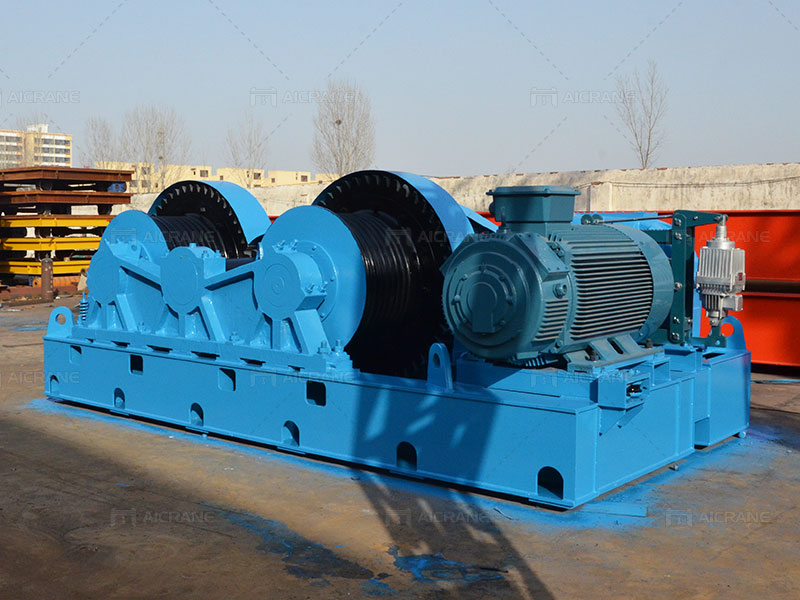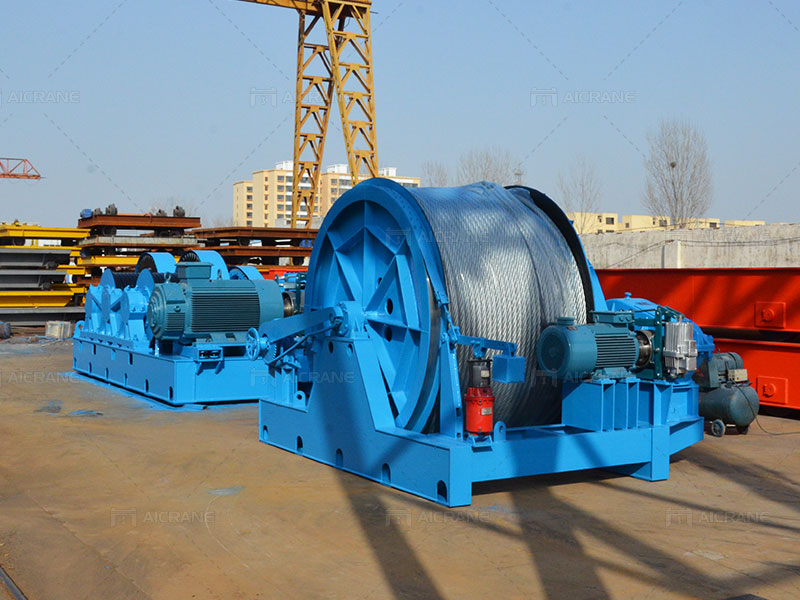The maritime industry stands as a testament to human innovation and ingenuity, connecting continents and facilitating global trade. Yet, behind the awe-inspiring ships that navigate the open seas lies a critical element often overlooked—the slipway winch.
These unassuming yet indispensable devices play a pivotal role in the delicate process of vessel launching and recovery, seamlessly transitioning vessels from land to sea and back again. This article delves into the significance and workings of slipway winches, highlighting their role in shaping the maritime landscape.

Understanding Slipway Winches: Bridging Land and Sea
Slipway winches, also known as ship launch winches or marine travel lift winches, are specialized machines designed to facilitate the controlled movement of vessels between land and water. They are a cornerstone of shipyards, docks, and harbors, enabling the safe launching of newly constructed vessels and the efficient recovery of boats for maintenance, repairs, or storage.
The Vessel Launching Process
The launching of a vessel is a carefully choreographed sequence that demands precision and expertise. Slipway winches play a central role in this process:
Preparation: Before the launch, the vessel is typically positioned on a cradle or trailer on a slipway—a sloping ramp that leads into the water.
Attaching the Winch: The slipway winch is then connected to the vessel using sturdy cables or straps. These attachments ensure that the vessel remains stable and secure during the launch.
Controlled Descent: As the winch’s powerful motor activates, it gradually releases the cables or straps, allowing the vessel to move down the slipway and gently slide into the water.
Constant Monitoring: Skilled operators closely monitor the descent, adjusting the winch’s speed and tension as needed to ensure a controlled and smooth transition.
Vessel Floats: Once the vessel is fully in the water, it begins to float, marking a successful launch.

The Vessel Recovery Process
Slipway winches are equally crucial in the recovery of vessels from the water onto dry land:
Preparation: The vessel is maneuvered into the water using tugs, propellers, or its own propulsion system.
Winch Attachment: Cables or straps are attached to the vessel, securing it for the ascent up the slipway.
Winch Activation: The slipway winch engages its powerful motor, gradually pulling the vessel out of the water and onto the slipway.
Controlled Ascent: Experienced operators carefully regulate the winch’s speed and tension to ensure that the vessel is lifted smoothly without tilting or shifting.
Final Positioning: Once the vessel is securely on land, it can be transported to the desired location within the shipyard for maintenance, repairs, or storage.
The Significance of Slipway Winches
Efficiency and Precision: Slipway winches offer precise control over vessel movement, minimizing the risk of accidents and ensuring that the launch and recovery processes occur seamlessly.
Vessel Preservation: The controlled descent and ascent facilitated by these winches products prevent damage to vessels and their delicate components, safeguarding both the vessels and the investment made in their construction.
Operational Flexibility: Slipway winches are adaptable to various vessel sizes and weights, making them suitable for a wide range of marine craft, from small boats to large ships.
Maximizing Resources: Slipway winches optimize shipyard resources by expediting the vessel launch and recovery processes, allowing shipyards to increase their throughput.
Maintenance and Safety Considerations
Maintaining slipway winches is imperative to their continued functionality and safety:
Regular Inspection: Scheduled inspections of winch components, cables, and attachment points ensure that all elements are in optimal condition.
Lubrication: Proper lubrication of mechanical parts prevents wear and ensures smooth operation.
Safety Measures: Safety devices such as emergency stop controls, load limiters, and anti-slip mechanisms must be regularly tested to ensure they function as intended.
Operator Training: Skilled operators who are well-versed in winch operations and safety protocols are essential to prevent accidents and mishaps.
Slipway winches may operate behind the scenes, but their impact on the maritime industry is profound. They bridge the gap between land and sea, facilitating vessel launches and recoveries with precision, efficiency, and safety. These unassuming devices uphold the integrity of vessels, optimize shipyard resources, and contribute to the smooth functioning of global maritime trade. From fishing boats to colossal ships, slipway winches continue to be the unsung heroes that ensure vessels embark on their maritime journeys with grace and return to shore with the promise of continued excellence. In order to know more about different winches types, you can check this website as you need ellsencranes.com/.